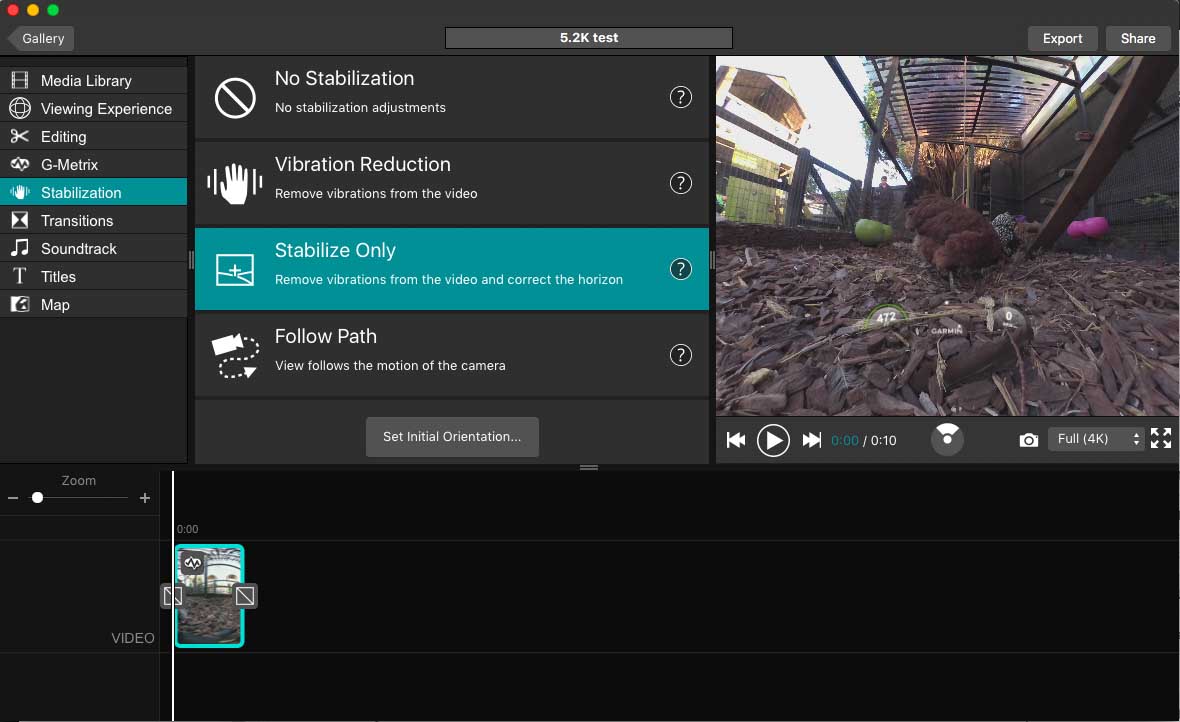

But what came out of the box for the first VIRB 360 I had (yes, I’m on number two) was something that almost cost me a shoot. Like many other 360-degree cameras on the market, it’s a first-generation product right now. Sadly this polish did not extend to Garmin’s VIRB Edit desktop software, which was incomplete at launch and still crash-prone today. That the app was this polished from day one is a big deal when the rest of the industry is pushing a release-first, patch-later model. I was able to live stream to Facebook on the first try (the resolution on live streams is a low 1280x720, which looks even worse in 360 degrees, but that the camera is able to do this is at all is a big step up from its nearest competitor, the Nikon KeyMission 360). The one thing I wished for was the ability for raw photo capture to a DNG file, but at least you have the option for a flat color profile for the JPG file.
Garmin virb edit update failed professional#
Once you connect the first time, it will automatically find the camera later and you have a lot of professional controls at your fingertips to control exposure. The app itself is smooth and easy to use, at least the iOS version I tried on my iPhone 6s. That said, if you want more advanced settings or to preview your footage or photos before shooting, you’ll need the Garmin VIRB app.Ī refreshing amount of buttons, switches and screens to work with directly on the camera. Many manufacturers are eliminating screens and controls from their cameras, and so it’s refreshing to see this degree of control without needing to eat up phone batteries. There’s even a handy sliding switch to turn on video, not a bad idea compared to a button that’s easy to accidentally hit. The camera features plenty of buttons and a screen to change settings right on the camera without the need for an app. Measuring all of that stuff requires a lot of battery power, and so thankfully the battery is replaceable with just a quick removal of the tripod mount (or the also-included GoPro mount) to access the battery compartment. It’s the company playing to its obvious strengths. Besides the higher resolution, the Garmin features a bevy of sensors to measure things such as speed, altitude, distance, and location. So what’s it like shooting with the Garmin? Wonderful and frustrating at the same time. The camera also shoots on Micro SD cards. The Garmin fits the mold of most other consumer/prosumer cameras, using two sensors and lenses sandwiched back to back to form a 360-degree image.

At this price point, few options (other than perhaps the Vuze 4K 3D 360 camera) that use more than two lenses exist. All of the modes are 30 fps except for the 3.5K, which is 60 fps.

You can also shoot lower resolution 5K, 4K, or 3.5K. The landscape for sub-$1,000 cameras that can shoot decent quality is remarkably thin, and even though GoPro's touted its Fusion as the best camera in this space, it’s nowhere to be found at press time and the Garmin shoots higher resolution anyway (5.7K versus 5.2K). This made me a little nervous with a client shoot coming up, but I pulled the trigger and hoped for the best. The camera was so new that I couldn't even purchase an extra battery for it at release time in June. Much more expensive than the Gear 360 by about $640, but if it had extra resolution and stitch lines that didn't move, that was enough for me. It had 5.7K video in a package smaller than my first and for $800.


 0 kommentar(er)
0 kommentar(er)
